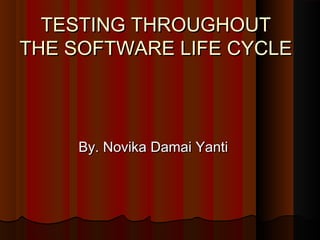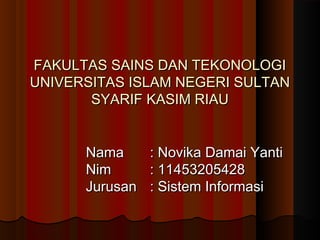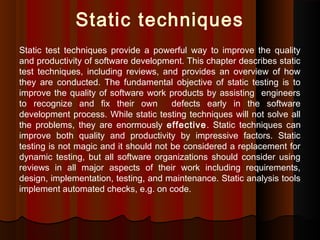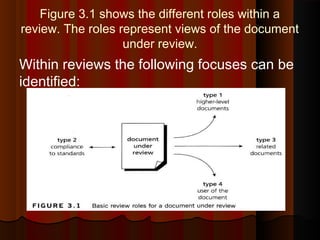The document discusses the integration of testing within the software development life cycle, emphasizing the importance of testing at all levels, including functional, non-functional, and structural testing. It outlines various testing types such as static testing, maintenance testing, and reviews, detailing their methodologies, objectives, and significance in enhancing software quality. Additionally, it highlights the roles and responsibilities in the review process, as well as the use of static techniques to identify and address defects early on in development.
















![2.2. Kick-off
An optional step in a review procedure is a kick-off meeting. The
goal of this meeting is to get everybody on the same wavelength
regarding the document under review and to commit to the time that
will be spent on checking. Also the result of the entry check and
defined exit criteria are discussed in case of a more formal review.
In general a kick-off is highly recommended since there is a strong
positive effect of a kick-off meeting on the motivation of reviewers
and thus the effectiveness of the review process. At customer sites,
we have measured results up to 70% more major defects found per
page as a result of performing a kick-off, [van Veenendaal and van
der Zwan, 2000]](https://image.slidesharecdn.com/testingthroughoutthesoftwarelifecyclestatistictechniques-171208083326/85/Testing-throughout-the-software-life-cycle-amp-statistic-techniques-17-320.jpg)






